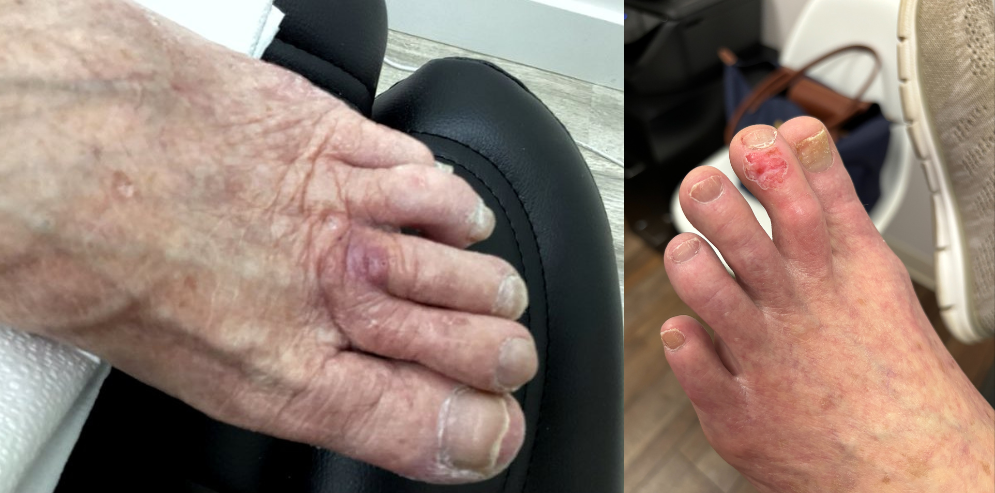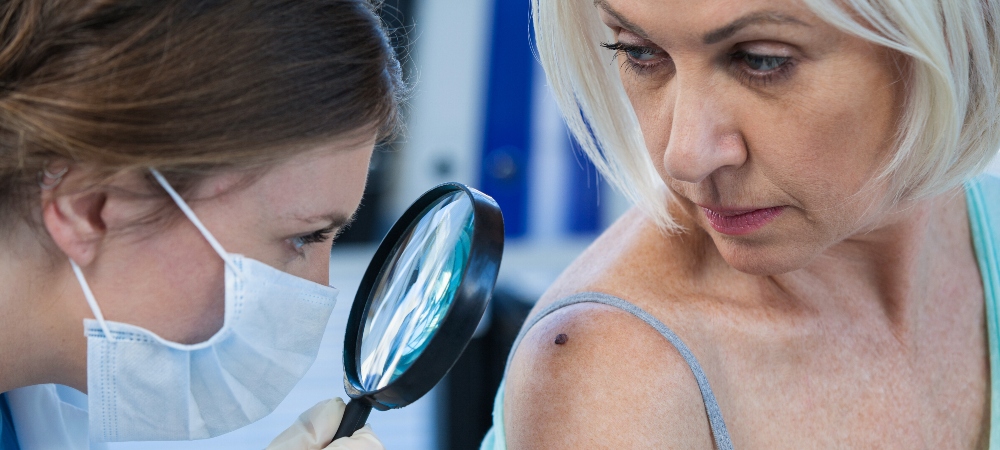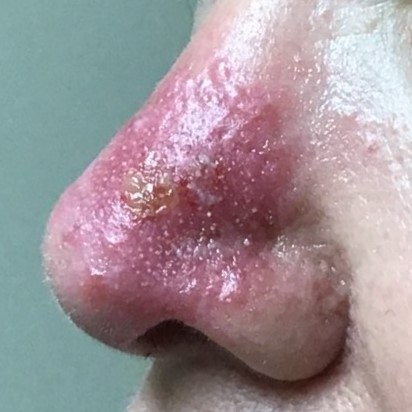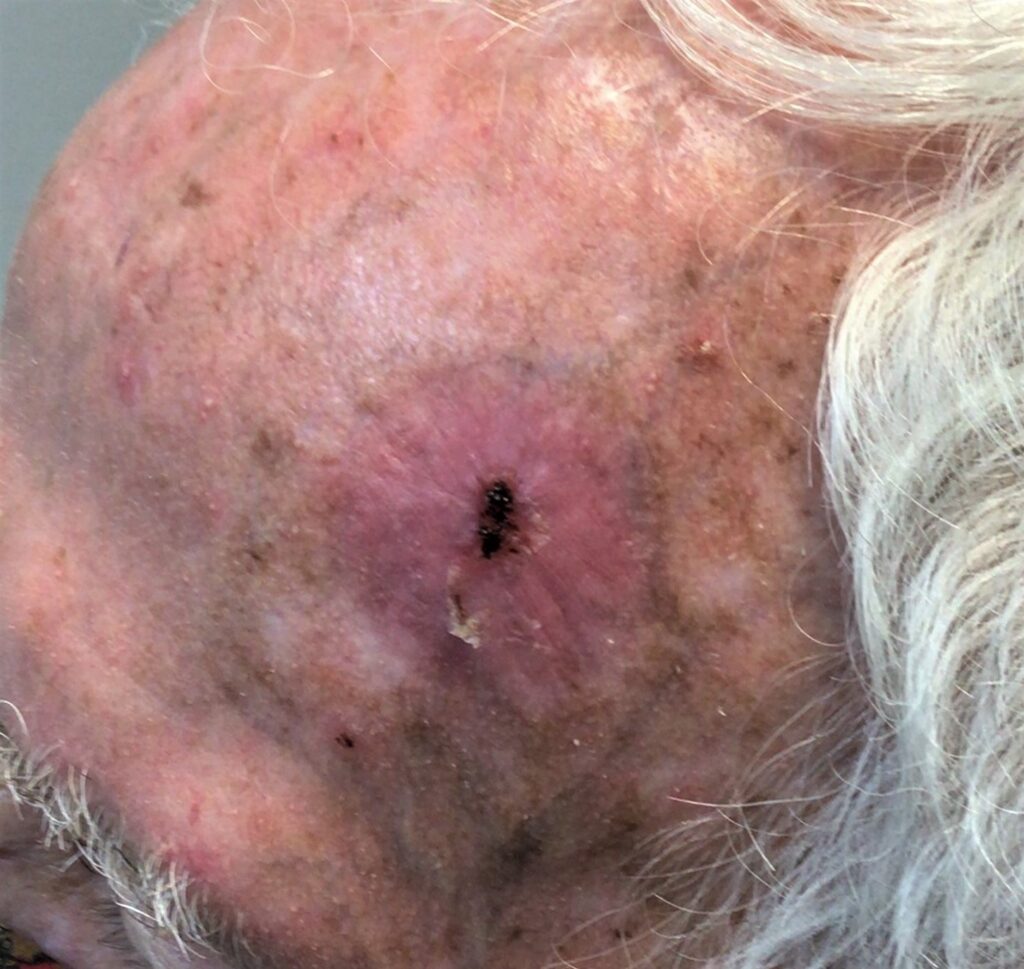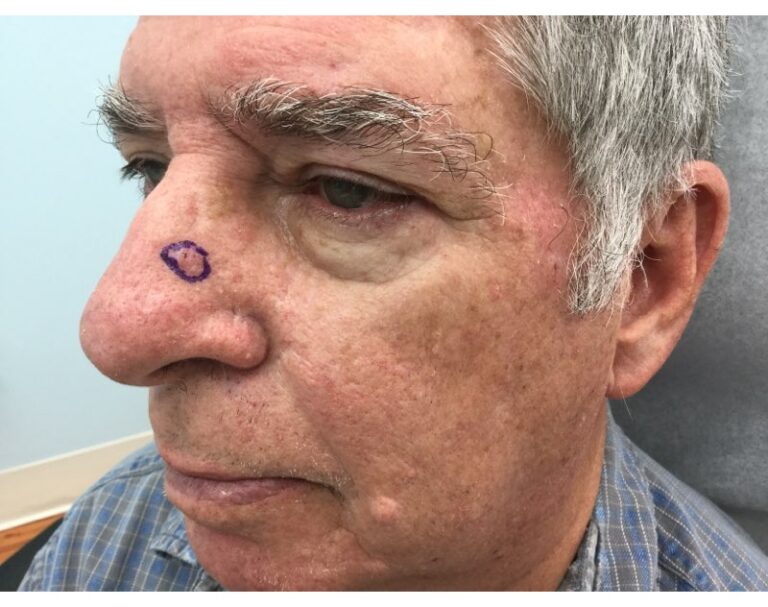
Basal cell skin cancer is one of the most common forms of skin cancer. While the disease often appears as a semi-transparent bump, there are many different types of basal cell skin cancer, and the disease can take a wide range of forms. Early detection is one of the most important factors in fighting skin cancer, so it’s important to arm yourself with knowledge on how each of the various basal cell skin cancer types tends to appear.
Basal Cell Skin Cancer Types
Basal cell skin cancer symptoms often present as irritated skin patches that can itch, bleed, and scab. There are subtle differences in the types of basal cell skin cancer, so it’s always best to have a dermatologist examine and diagnose your particular situation.
If you’re noticing a bump or scar-like growth on your skin that refuses to heal, you may be dealing with one of the following common types of basal cell skin cancer:
- Nodular basal cell skin cancer
- Cystic basal cell cancer
- Sclerodermiform (Morpheiform) basal cell skin cancer
- Infiltrative basal cell skin cancer
- Micronodular basal cell skin cancer
- Superficial basal cell skin cancer
- Fibroepithelioma of Pinkus
- Pigmented basal cell skin cancer
What Do the Basal Cell Skin Cancer Types Look Like?
Basal cell skin cancer is most often found on body parts with the most frequent sun exposure, including the face, head, and neck. Sunlight and UV rays are the biggest causes of basal cell skin cancer, but in rare cases, this skin cancer can appear on body parts that aren’t regularly exposed to the sun.
People who eventually receive a basal cell skin cancer diagnosis will often detect a noticeable change in their skin’s appearance, such as a sore that won’t heal or a small bump. These growths can present different characteristics depending on the type of basal cell skin cancer that has developed. You may see:
- A pearly, skin-colored, or pinkish bump: the most common basal cell skin cancer growths will appear as translucent, oftentimes with visible blood vessels. People with darker complexions may see a darker lesion with translucent tones.
- A black, brown, or bluish area: Some basal cell skin cancer growths appear as darker areas with raised, translucent edges.
- A scaly, flat, reddish area: While this type of basal cell skin cancer is less common, you may see a patch on your back or chest.
- A waxy, white, scar-like growth: This kind of basal cell skin cancer growth often appears without a clearly identifiable edge.
Basal cell skin cancer areas can bleed and scab over. It’s important not to pick at them and have them examined by a dermatologist as soon as possible.
Surgery-Free Treatments for Basal Cell Skin Cancer Types
Image-Guided SRT is a skin cancer treatment that works for many of the types of basal cell skin cancer. This safe, effective, surgery-free technology uses ultrasound imaging and x-ray energy to kill skin cancer cells and produce better cosmetic results. Learn how it works and explore our FAQs, and talk to your doctor or dermatologist to find out if Image-Guided SRT is right for you. For additional questions, call our Skin Cancer Information Specialists at 855-936-4411 today.
